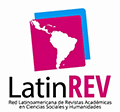Advancing academic opportunitie for disadvantaged youth: third year impact evaluation of a privately - managed school in a poor neighborhood in Montevideo.
DOI:
https://doi.org/10.22235/pe.v7i1.578Palavras-chave:
randomized design, private school, low-income population, high expectationsResumo
ABSTRACT. We study the three-year impact of a private tuition-free middle school on the academic outcomes of poor students. Several features of the treatment school fit with innovative paradigms that have delivered successful outcomes in poor urban areas. Our research design exploits the excess of applicants over the school capacity and the fact that participants were selected randomly. Specifically, we follow a cohort of students that entered middle school in 2010 and that were randomly assigned to attend the treatment school or public school as usual. We find that the treatment school impacted favorably on students’ academic advancement and math competencies. Also, the treatment school had a positive —and quite robust over time— impact on students’ and their parents’ academic expectations. This culture of high expectations has been previously identified in the literature as a key input for school success.Downloads
Referências
Arbona, Consuelo. “The development of academic achievement in school aged children: Precursors to career development” en Lent, Robert W. y Steven D. Brown (eds.) Handbook of counseling psychology. New York: John Wiley, 2000, pp.270-309.
Balsa, Ana y Alejandro Cid. “Impact Evaluation of a Privately Managed Tuition-Free Middle School in a Poor Neighborhood in Montevideo”. Working paper UM_CEE_ 2012-02, 2012. Disponible en http://fcee.um.edu.uy/investigacion/areas/ [Accedido en agosto de 2014].
Berends, Mark, Marisa Cannata, Ellen Goldring y Courtney Preston. “School Innovation in District Context: Comparing Traditional Public Schools and Charter Schools” en Economics of Education Review, vol.31, 2012, pp.318-330.
Bierlein, Louann A., Chester E. Finn Jr., Bruno V. Manno y Gregg Vanourek. “How Charter Schools Are Different: Lessons and Implications from a National Study” en Phi Delta Kappan, vol.79, 1998, pp.488-98.
Bifulco, Robert y Helen F. Ladd, Helen. “Institutional Change and Coproduction of Public Services: The Effect of Charter Schools on Parental Involvement” en Journal of Public Administration Research and Theory, vol.16, 2005, pp.553-76.
Catalano, Richard F., M. Lisa Berglund, Jean A.M. Ryan, Heather S. Lonczak y J. Davis Hawkins. “Positive youth development in the United States: Research findings on evaluations of positive youth development programs” en The Annals of the American Academy of Political and Social Science, vol.591, 2004, pp. 98-124.
Cohen, Sheldon. “Social relationships and health” en The American Psychologist, vol.59, 2004, pp.676-84.
Dobbie, Will y Roland G. Fryer Jr. “Are High Quality Schools Enough to Close the Achievement Gap? Evidence from the Harlem Children’s Zone” en American Economic Journal: Applied Economics, vol.3, n.3, 2011, pp.158-87.
---. “Getting Beneath the Veil of Effective Schools” en American Economic Journal: Applied Economics, vol.5, n.4, 2013, pp.28-60.
Dubow, Eric F., Mitzi Arnett, Katherine Smith y Maria F. Ippolito. “Predictors of future expectations of inner-city children: A 9-month prospective study” en The Journal of Early Adolescence, vol. 21, 2001, pp.5−28.
Luthar, Suniya S., Dante Cicchetti y Bronwyn Baker. “The construct of resilience: A critical evaluation and guidelines for future work” en Child Development, vol.71, 2000, pp. 543-62.
Newman, Tony y Sarah Blackburn. Transitions in the lives of children and young people: Resilience factors. Edinburgh: Scottish Executive Education Department, 2002.
PISA. Assessment Framework Key Competencies in Reading, Mathematics and Science: Key Competencies in Reading, Mathematics and Science 2009. OECD, 2009. Disponible en http://www.oecd.org/pisa [Accedido en agosto de 2014]
Purkey, Stewart C. y Smith, Marshall S.“Effective Schools: A Review” en The Elementary School Journal, Vol.83, 1983, pp. 426-52.
Sammons, Pam, Josh Hillman y Peter Mortimore. Key Characteristics of Effective Schools: A Review of School Effectiveness Research. England: Office for Standards in Education, London, 1995.
Sulimani-Aidan, Yafit y Rami Benbenishty. “Future Expectations of Adolescents in Residential Care in Israel” en Children and Youth Services Review, vol.33, 2011, pp.1134-41.
Wyman, Peter A., Emory L. Cowen, William C. Work y Judy H. Kerley. “The role of children future expectations in self esteem functioning and adjustment to life stress: A prospective study of urban at risk children” en Development and Psychopathology, Vol. 5,1993, pp. 645-61.
Zimbardo, Philip G. y John N. Boyd. “Putting time in perspective: A valid, reliable individual differences metric” en Journal of Personality and Social Psychology, vol. 77, 1999, pp.1271-88.















